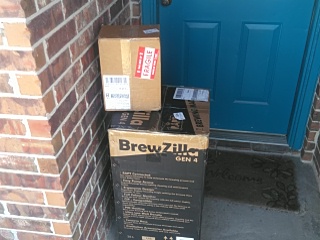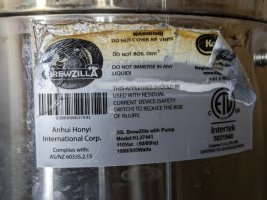So in case anyone is interested - I finally got motivated enough to do a postmortem on my melted Gen4. (As a reminder - it was plugged in with the heater turned off, but after a power failure it turned the heaters on all by itself.)
Accessing the thermal cutout took a bit of work, since everything under the kettle had to be removed first.
View attachment 825735View attachment 825736
The thermal cutout probably did its job, since it failed permanently open, likely due to the extreme heat. The thermal paste connecting it to the heater plate had turned to chalk. What mystifies me is that instead of being in series with the 12V coil supply to the heater relays on the circuit board, the thermal cutout is connected only to the external controller - which happens to be the very device that suddenly decided on its own that dry firing the heaters was such a great idea.
The protective sheathing on the wires going to the heater plate is charred but it isn't crumbly under the char. The insulation on the wires underneath looks okay. (The sheath charring had a rather dramatic effect on the inside of the bottom cover plate.)
View attachment 825737View attachment 825732
I wondered if the extreme heat would have had any effect on the heater plate seal, but the kettle still holds water just fine. I'm really waffling on what to do with this thing now. Finding out that there is no warranty on defective units was an expensive surprise, so I'm hesitant to abandon it. It looks like all I would need to do to get it operational again is figure out a way to mend the melted plastic feet on the circuit board enclosure. I would also probably add a switch for the heater AC power. I doubt I'd run it unattended again after this. However the nights where I used to pre-heat the strike water were likely low risk. After losing its mind, it would have to boil away all that water before firing dry.
View attachment 825733View attachment 825734
Pillaging it for parts would gain only a pump, a ball valve and a few fittings. I'd have to abandon the deluxe lid, but I could re-use the steam condenser. It's tempting, and the modular brew rig religion has gained a new convert, but we'll see.




